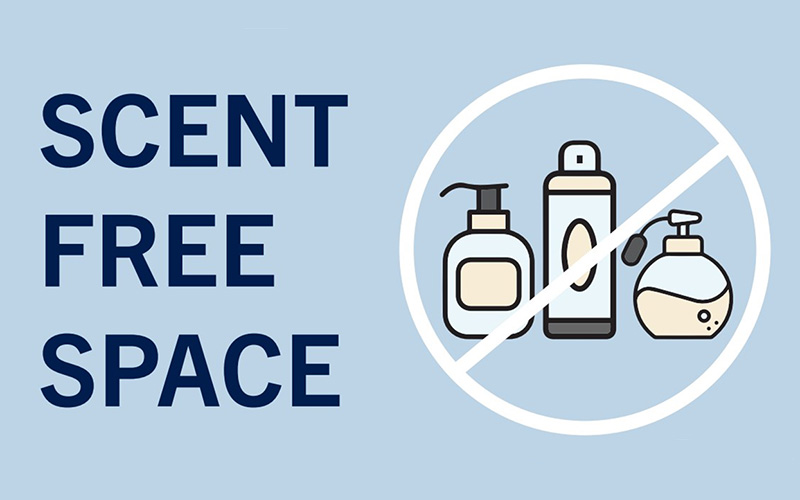When it comes to soaps and cosmetics, scent is one of the most powerful first impressions. Picking up a bar of soap and taking a sniff is almost instinctive—fragrance plays a big part in how customers connect with a product. But while pleasant scents can attract some buyers, allergies, sensitivities or overly strong fragrances can just as easily turn them away.
A recent review in The New York Times Wirecutter documented a search for the best bar soaps. It was not surprising that fragrance played a definite part in the reviewers’ picks, but it was interesting that two of the three top picks were unscented or fragrance-free.
Let’s explore why scent matters, how “scent-free” policies fit into the bigger picture, and what all this means for small soap and cosmetic makers.
Why Fragrance?
Scent is emotional. It can make someone feel clean, calm, energized, or comforted. Fragrance is often the deciding factor when customers choose between similar products — sometimes it’s the only factor in choosing a product.
But there’s a fine line between “pleasantly scented” and “too much.” Strong or even slight lingering fragrances can feel artificial or even irritating, especially in confined spaces or to sensitive noses. What smells refreshing to one person may smell overpowering to another.
For makers, this means balancing aroma with restraint. Fragrance should complement the product’s use, not dominate it.
Why Some Places Ban Scents Altogether
Many workplaces, medical offices, and public buildings now have “scent-free” or “fragrance-free” policies. These policies don’t exist to make life difficult; they protect people with fragrance sensitivities, asthma, migraines, or other health conditions that can be triggered by scented products.
In workplaces, scent-free policies may apply to:
- Personal products such as lotion, hair products, perfume, or aftershave
- Cleaning and air-freshening products used by staff
- Soaps provided in restrooms or shared kitchens
In healthcare facilities, fragrance-free policies are even more common. Hospitals, clinics, and long-term care centers often restrict fragranced products because:
- Patients may have respiratory or neurological conditions that react to scent
- Medical staff work in close quarters where odors linger
- Clean, neutral environments help reduce contamination and discomfort
Unscented or Fragrance Free – the Difference
“Unscented” and “fragrance-free” are often used interchangeably, but they mean slightly different things. Sometimes, though, it’s just a distinction without a difference. Above all, if you make products intended to be unscented or fragrance-free, be truthful in your marketing and in your ingredient declaration.
UNSCENTED
“Unscented” means that the product doesn’t have a noticible scent.
A product can still have a smell from its base ingredients. Natural ingredients—especially plant oils, butters, or extracts—often carry their own characteristic odor. Some can be earthy, fatty, or even slightly fishy depending on how they were processed.
To cover those natural odors, formulators sometimes add masking fragrances. These don’t make the product “smell good” in the traditional sense; instead, they try to neutralize or balance the natural aroma, so the finished product smells like “nothing.”
Since it smells like “nothing,” it is considered “unscented.”
Such a masking agent may be listed in the ingredient declaration by its chemical name, as “fragrance,” or it might even be omitted altogether because it has been deemed an incidental ingredient.
If a product’s base materials have strong odors, reformulating may be more effective than over-masking. Choosing cleaner raw materials, using refined oils, or adjusting the preservative system can improve the natural scent without heavy masking.
FRAGRANCE-FREE
“Fragrance-free” means that no fragrance has been intentionally added to the product. It may still smell like something, but nothing has been ADDED to give it fragrance. For example, a lip balm made with unrefined cocoa butter may smell like chocolate, even though no fragrance components have been added.
There is a fine distinction, and it has loopholes. A “masking fragrance” may actually be a “fragrance” itself … it might be a neutralizer or other chemical that counteracts the smell of another ingredient. It may be identified in the ingredient declaration by its chemical name, and the product still labeled “fragrance-free.”
Essential Oils vs. Synthetic Fragrance Oils
Not all fragrance ingredients are created equal. Both essential oils and synthetic fragrance oils can make beautiful scents—but they also carry different considerations.
Essential oils are natural aromatic compounds extracted from plants. They’re often perceived as gentler or “safer,” but that’s not always true. Some essential oils, especially when used in high concentrations, can cause irritation or allergic reactions. Strong oils such as cinnamon, clove, peppermint, or citrus may be particularly sensitizing.
Synthetic fragrance oils are laboratory-made blends that can reproduce natural aromas or create entirely new ones. They offer consistent quality and performance, but they are also more likely to trigger reactions in sensitive individuals.
Both plant-based essential oils and synthetic fragrance oils can contain fragrance allergens or components that are subject to IFRA safety standards, even in small quantities.
For labeling purposes, both types of fragrance materials are simply “fragrance.” The difference lies in marketing and customer perception, not in how they are identified on the label. If a fragrance is added for scent—natural or synthetic—it must be declared in the ingredient list as “fragrance” or by listing the names of the components of the fragrance. (For example, you could list the names of the essential oils you use OR you could list them simply as “fragrance”).
What This Means for Small Soap and Cosmetic Makers
Scent preference is deeply personal, and customers’ desires and restrictions vary widely. Offering both scented and fragrance-free options is a simple way to reach more people and show awareness of sensitivities.
Here are some practical tips:
- Know your target customer. If your customers are in the workforce, especially in medical or educational settings, they may be restricted from scented products. Conversely, retireees or stay-at-home Moms may prefer stronger, more complex scents.
- Offer fragrance-free choices. Consider offering fragrance-free options, at least for your best-selling soaps, lotions, creams, and serums. Label them clearly as “fragrance-free” or “unscented,” depending on the formula.
- Be transparent. Even natural essential oils are fragrances under U.S. labeling rules. If they’re added for scent, they must be declared as “fragrance” or listed individually in the ingredient list.
- Consider where your products will be used. If you are selling to hospitals, wellness centers, or businesses with scent-free policies, fragrance-free options may be essential to qualify.
- Use fragrances safely. Follow IFRA guidelines and at least be aware if your fragrances contain allergens.
Final Thoughts
Fragrance is part of the art of soap and cosmetic making—it engages emotion, memory, and experience. But as consumer awareness grows and scent sensitivities become more widely recognized, thoughtful restraint has become just as important as creativity.
Offering a range of lightly scented and fragrance-free products not only serves more customers—it demonstrates professionalism, inclusivity, and that you care.


Leave a Reply